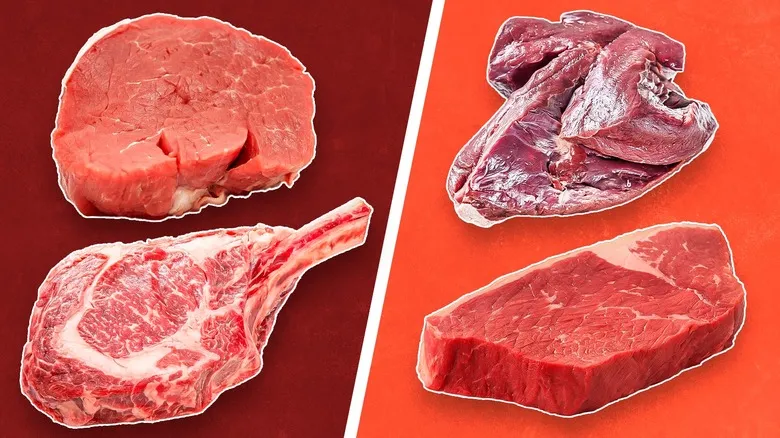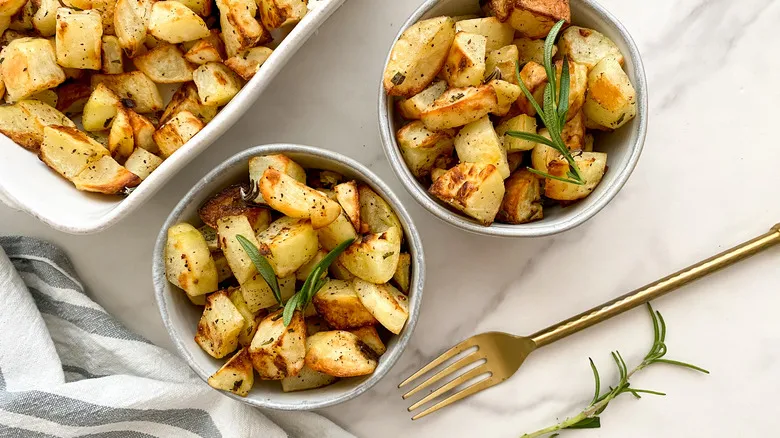Buy: Filet mignon
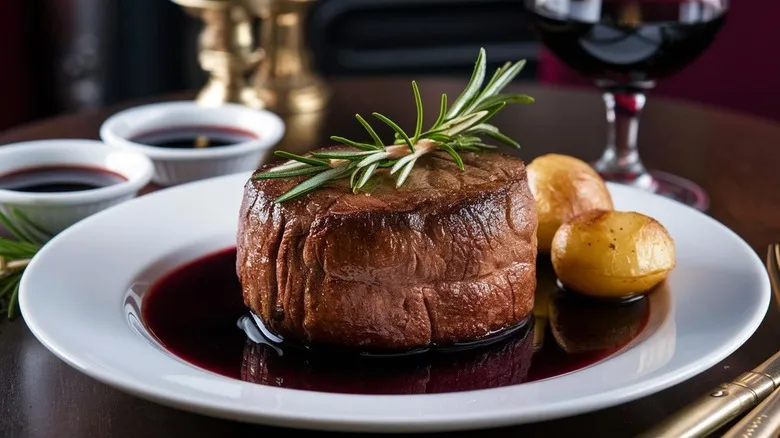
If tenderness is your top priority when it comes to steak, the clear choice is filet mignon. Literally meaning "cute cut," this refined steak is low in fat and melts in your mouth when prepared properly. While it may not have the robust beef flavor of some other cuts, it more than compensates for that with its exceptional tenderness.
"Filet mignon is the most tender and lean meat from the cow," says Rosangela Teodoro. "It comes from a muscle that experiences minimal activity, making it very protective. The texture of the filet is uniform, appealing to those who prefer a mild, slightly sweet, and velvety taste without the heaviness of fat."
David Rose also believes that filet is one of the finest cuts available, particularly for grilling. If you typically cook your steak well done, you might want to rethink that approach with this exquisite cut. "For a leaner, mild beef flavor that's incredibly tender, filet mignon is an excellent choice," he notes. "Since filet mignons are leaner and have lower fat content, it's best not to cook them beyond medium rare, as that can lead to a dry steak."
Avoid: Bottom round roast
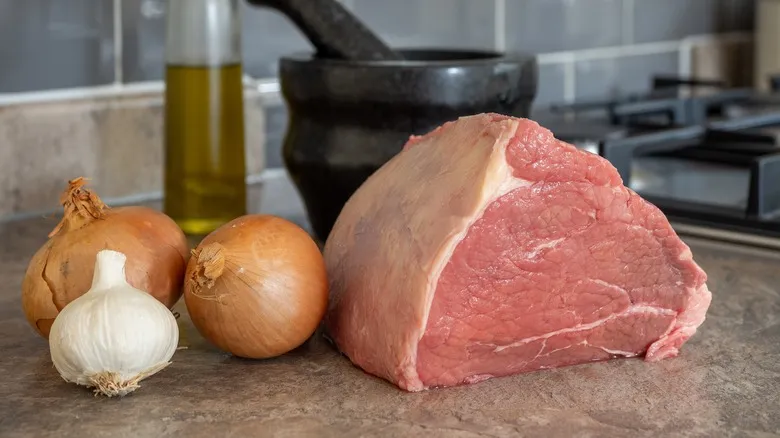
If you're looking to explore beyond the most popular steak options and try some lesser-known cuts, it's important to grasp the distinction between primal and subprimal cuts. Both Rosangela Teodoro and David Rose believe that getting to know these cuts can be advantageous. "A primal cut refers to a section of beef that is divided into seven manageable parts known as primals: chuck, rib, loin, round, brisket, plate, and flank," Teodoro clarifies.
The round primal is sourced from the cow's back leg, and these beef cuts are typically very lean and quite tough. "I would personally steer clear of the less expensive, tougher cuts that lack robust flavors, such as some bottom-round roasts," Rose suggests. "They tend to be chewy and require extended cooking times, and if not prepared properly, they can turn out dry or bland." In many countries, including the U.K. and Australia, the bottom round roast is also referred to as silverside.
Bottom round roast isn't the ideal choice for grilling, as it benefits from a slow, low-temperature cooking method. This approach allows the connective tissue to break down, resulting in a flavorful roast beef. However, for quick grilling, it's best to avoid this cut.
Buy: Tomahawk
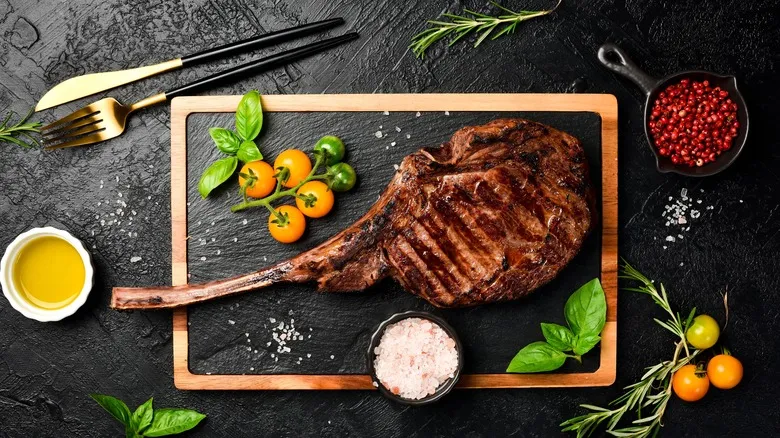
Seeking a visually stunning steak? Look no further than the impressive tomahawk steak. Named for its resemblance to the tomahawk axe, this cut is both thick and succulent. With the long bone expertly French-trimmed, you have the option to enjoy this cut by using the bone as a handle, indulging your primal instincts.
David Rose is a fan of this cut. "My personal favorite is the tomahawk ribeye due to its beautiful marbling and its ability to steal the show with the rib bone," he shares. The tomahawk is not for the faint-hearted, typically weighing around two pounds, making it perfect for impressing a crowd—or simply treating yourself. "It's ideal for any celebratory occasion or a memorable steak experience when you want to indulge," Rose suggests.
Rosangela Teodoro also values this cut. "The tomahawk has a slightly sweeter flavor profile compared to its counterpart, the cowboy steak, which has a smaller bone," she explains. "If you're looking to savor an umami experience, consider asking for a dry-aged version."
Avoid: Offal cuts
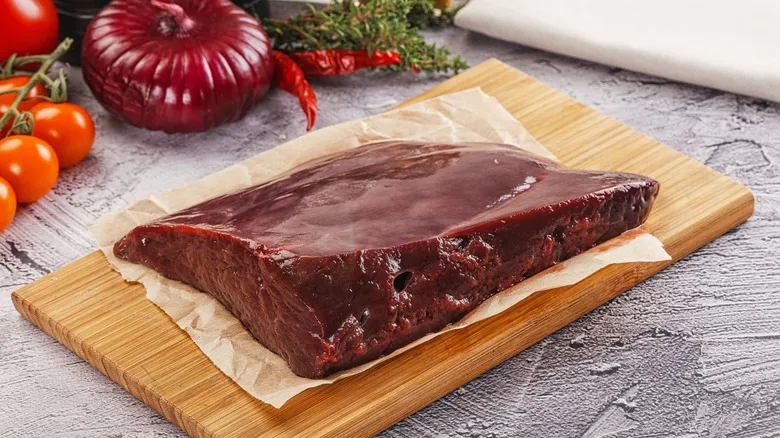
With the growing movement against food waste and the rising trend of nose-to-tail dining, offal has increasingly taken center stage in fine dining. Offal refers to the organ meats of animals, particularly cows, with well-known varieties including liver, kidneys, and tongue. These cuts are often featured in pâté and boast a rich flavor that is far more intense than the steaks you might be accustomed to. However, seasoned butcher Rosangela Teodoro cautions against purchasing offal, not due to its taste, but because of safety concerns. "I would also avoid offal cuts like liver or tongue, as they require careful handling and preparation to ensure food safety and quality," she advises.
If you're eager to experiment with an offal recipe, seek out a reputable butcher who is willing to discuss how the meat has been processed and how you can prepare it at home. When cooked properly, offal can be a delightful culinary experience, but if mishandled, it can result in dry, grainy meat that may deter you from trying it again!
Buy: Ribeye
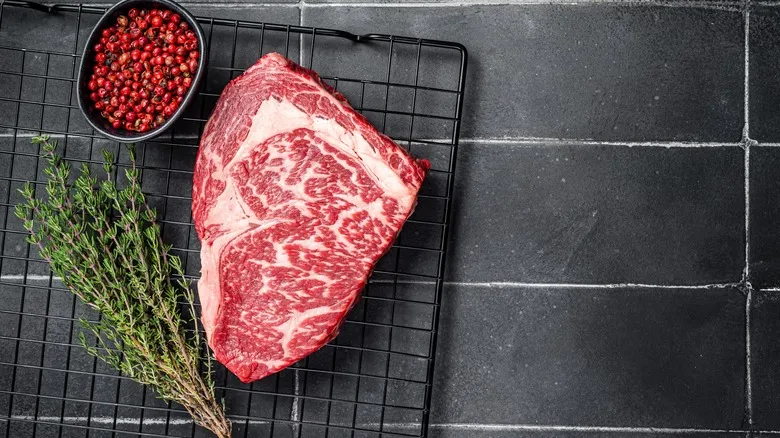
If you're ready to trade a little tenderness for an incredibly flavorful steak, ribeye should be your top pick. As one of the premium beef cuts, it comes with a higher price tag, but the exquisite marbling of fat justifies the cost. "The best ribeye comes from the 6th to the 12th rib of the cow, featuring a long, exposed 7-inch bone attached to the meat," says Rosangela Teodoro. "If you want to impress a meat lover, this is the cut to choose."
While many steak aficionados recommend cooking a steak as rare as possible, ribeye truly excels when prepared medium-rare to medium. This allows the delectable fat to melt into the meat, keeping it wonderfully juicy.
"I consider ribeye my go-to for grilling because of its marbling," shares David Rose. "The marbling helps retain moisture during the high heat of grilling, and as the fat melts, it infuses the meat with a rich, beefy flavor. Additionally, its thicker cut is ideal for grilling, giving you ample time to achieve a perfect sear without overcooking the interior."
Teodoro also emphasizes that the quality of marbling in beef starts even before the calf is born. "Achieving excellent marbling requires careful management of every stage of a calf's growth," she explains. "More marbling indicates a healthy, high-quality breed like Wagyu, nutrient-rich feed, the age of the cattle, and the development of muscles from grazing in the fields."
Avoid: Rump roast
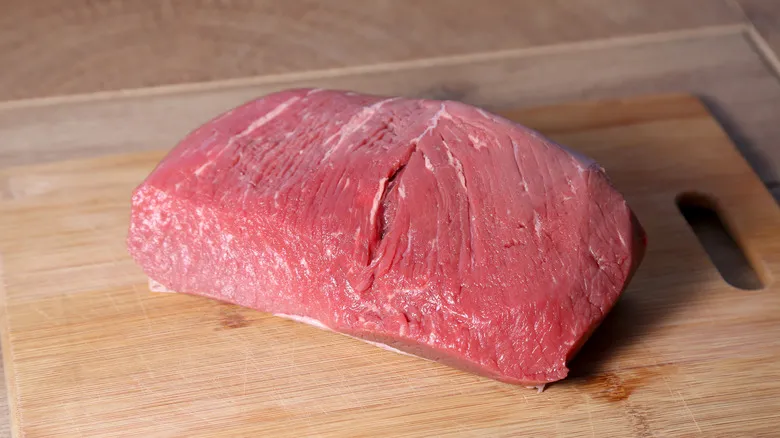
Next on our list of steaks to steer clear of is another cut that originates from the round primal. This section of the cow is quite active, resulting in muscles that are very lean with minimal marbling. The rump roast may often feature a fat cap on top, which can render into the meat during cooking, enhancing its flavor compared to other cuts from this primal. However, David Rose advises against choosing these cuts if you're seeking a steak that can be quickly grilled.
That said, you don't have to completely eliminate this cut from your options; it simply requires the right cooking method to bring out its best qualities. The oven or slow cooker are ideal for this type of meat, allowing for slow cooking at low temperatures until it becomes tender. While a rump roast can make for a delightful Sunday dinner, it is not the best choice for grilling and serving alongside fries.
Buy: Picanha
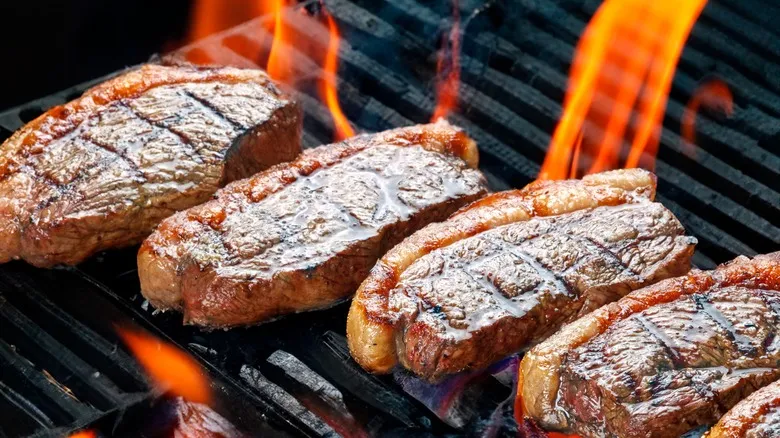
Although it may not be as famous as filet mignon or ribeye, picanha is a cut of steak worth trying if you seek tenderness and robust flavor. "Picanha is a remarkable cut of beef with a strong association to Brazilian barbecue, or churrasco," says Rosangela Teodoro. "What distinguishes it is the thick layer of fat on top, which contributes to the meat's tenderness and rich taste. Unlike other cuts that can be lean or tough, picanha is juicy and full of character, making it a popular choice for grilling."
Picanha is located at the top of the rump, meaning it doesn't endure as much strain as some tougher cuts. It's an excellent option if you're looking for a balance of texture and flavor. "The magic of picanha lies in how the fat cap melts and bastes the meat as it cooks," Teodoro explains. "This cut offers versatility; you can prepare it in various ways, but regardless of the method, you always achieve a delicious outcome."
Avoid: Bottom round steak
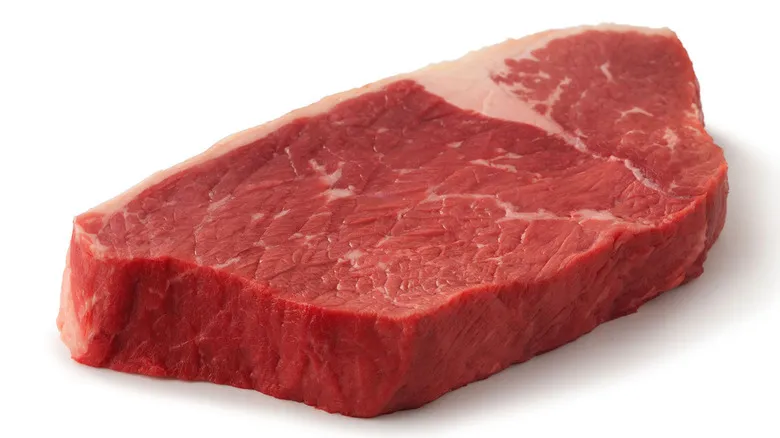
Once you realize that purchasing a cut of meat intended for roasting isn't the ideal choice for steak, you might consider trying a piece labeled bottom round steak. While this thinner cut is indeed meant to be cooked quickly like a steak, it still doesn't make it a great option.
Originating from the same hindquarters as the bottom round roast, this steak is lean and tough, lacking the flavor and texture found in premium cuts. Although it may be a budget-friendly option, the compromise in texture isn't worth the savings. While marinating can help tenderize the meat, it won't come close to the quality of a ribeye or sirloin. Instead of wasting your money and effort on this cut, consider skirt steak or picanha, which offer much better value for your investment.
Buy: Porterhouse
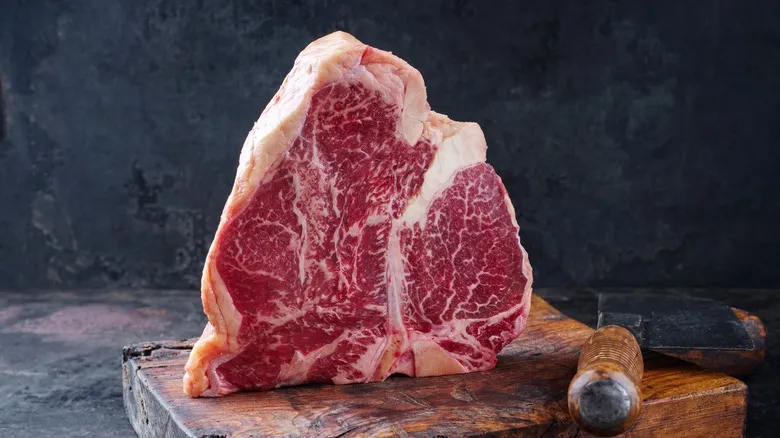
Can't decide if you're craving something melt-in-your-mouth tender or a bold, beefy flavor? With a porterhouse, you don’t have to choose. "The porterhouse boasts an impressive presentation, featuring a bone that separates a portion of filet mignon from the New York strip," explains Rosangela Teodoro. "Always aim for the prime grade, as the marbling will help protect the meat while enhancing its tenderness and flavor."
Marbling plays a vital role in a steak's flavor, and selecting cuts with ample fat will delight your taste buds. "In my view, marbling is essential when choosing cuts, especially if you desire a steak that's juicy, tender, and bursting with flavor," says David Rose. "The more marbling a cut has, the more fat it contains, and fat equals flavor."
If you're curious about the difference between a porterhouse and a T-bone, it primarily comes down to size. A porterhouse steak features a larger tenderloin, resulting in a bigger overall steak. Rose suggests that understanding the distinctions between various cuts of meat will enhance your home-cooked steak experience. "Get to know the steaks and types you enjoy, and learn the optimal cooking temperatures for the steaks you're preparing," he recommends.
Buy: Bistro
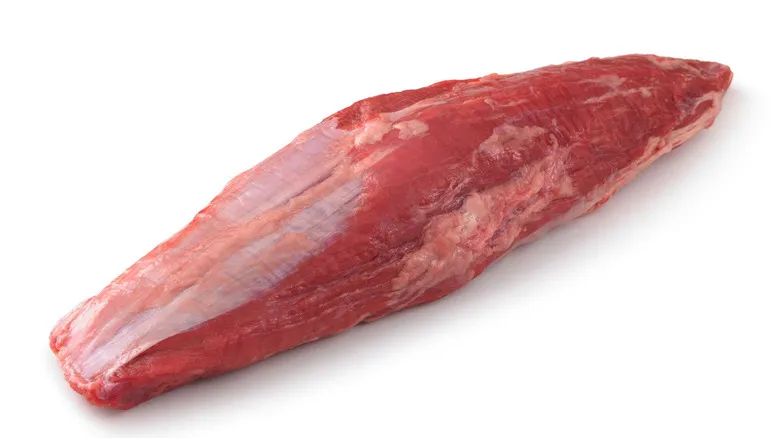
You might not be familiar with bistro steak, but that shouldn't deter you from giving it a try. Also referred to as shoulder tenderloin, this lesser-known cut boasts many of the qualities of filet mignon, but at a more affordable price.
Bistro steak is sourced from the chuck primal of the cow, specifically from the shoulder area. It's a rare cut, as it requires skill to extract, so you probably won't find it in the meat section of your local grocery store. You may need to ask your butcher for it. Chef David Rose is a strong advocate for bistro steak and encourages home cooks to consider this option. "Bistro steak is tender, flavorful, and versatile... a fantastic choice if you're seeking something a little different from the standard cuts," he recommends.
While it is tender like filet mignon, bistro steak offers a more robust beef flavor, making it an excellent option for those wanting a steak with a bit more intensity. Although it may not be as buttery as a filet, it strikes a wonderful balance of texture and taste, especially when cooked to medium-rare.
Buy: Skirt steak

Many home chefs shy away from tougher cuts of beef, opting instead for familiar tender choices like filet mignon and ribeye. However, by selecting the right cuts, you can discover flavorful steaks that come without the high price tag of premium options. Skirt steak is a prime example, and chef David Rose believes it deserves more recognition. "Skirt steak boasts a robust beef flavor, making it ideal for dishes like fajitas or stir-fries, and it pairs wonderfully with marinades to elevate its taste," he suggests. "To improve the tenderness of these cuts, it's crucial not to cook them beyond medium-rare and to slice against the grain."
Skirt steak is sourced from the plate primal and is available in both inside and outside varieties, though you're most likely to find inside skirt at your local butcher. While it contains a fair amount of connective tissue, it also has sufficient fat to keep it juicy, which makes it one of the more favorable tougher cuts. If you're interested in exploring lesser-known steak cuts, Rosangela Teodoro recommends building a good relationship with your butcher and supporting those who prioritize ethical animal husbandry. This approach will give you access to "a wider variety of meats and cuts, along with expert guidance on preparation and cooking methods," she explains.
With your butcher's assistance, you can take advantage of cost-effective cuts that deliver exceptional flavor. Once you’ve mastered cooking with skirt steak, your weeknight dinners may be transformed for the better.
Buy: Rib cap
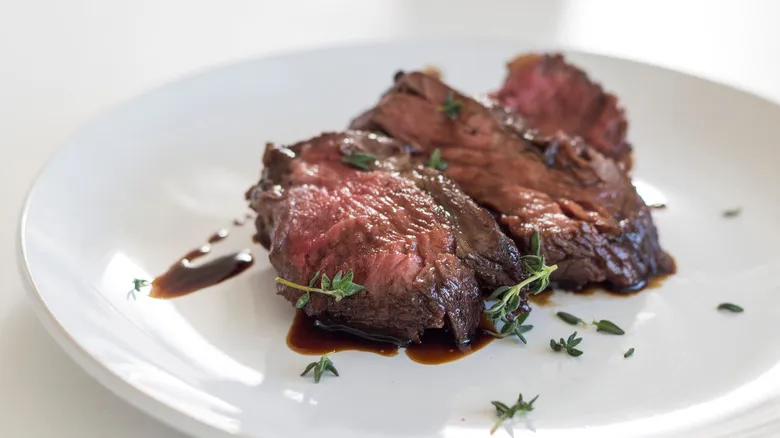
If you enjoy ribeye steak, you'll definitely appreciate the rib cap. Often called "butcher's butter," this cut is incredibly tender and features exquisite marbling. Rosangela Teodoro is a fan of this unique cut, listing it among her favorites. "The ribeye cap, known as the spinalis, is the fat cap of the ribeye," she shares. "It cooks quickly, and with just salt and pepper, you can create a delicious, tender, and flavorful steak."
Marbling is a crucial characteristic of the rib cap, and David Rose emphasizes its importance when selecting a high-quality steak. "When I choose steak or any beef, I always look for marbling—those streaks of fat within the meat that enhance tenderness and flavor. The beef should have a vibrant, cherry-red hue and feel firm to the touch." As the rib cap cooks, the fat renders down, resulting in a juicy, flavorful piece of meat. There's no need for heavy sauces with this steak; its bold flavor is more than enough to stand out on its own.
Recommended
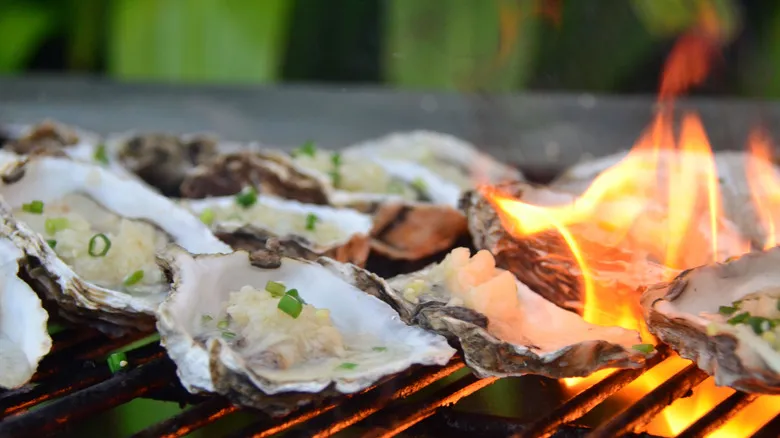
Oysters Vs Clams: Which To Choose For Your Summer Cookout
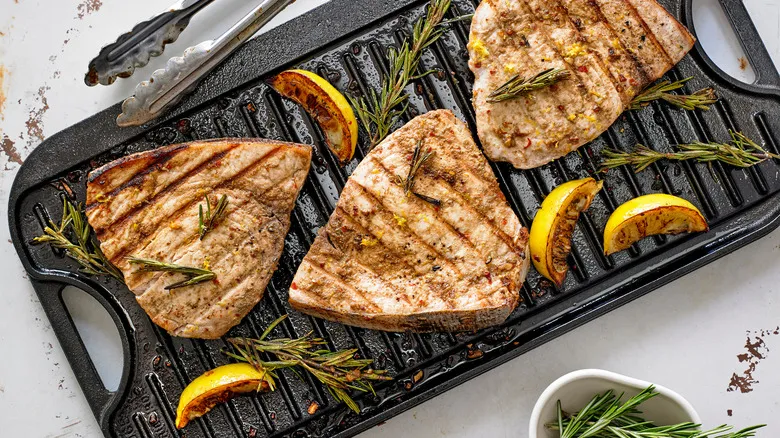
The Key To Grilling Perfectly Moist Swordfish

What Is Beef Barbacoa, And Is It Different Than Birria?

Upgrade Your Lackluster Frozen Pizzas By Throwing Them On The Grill
Next up

